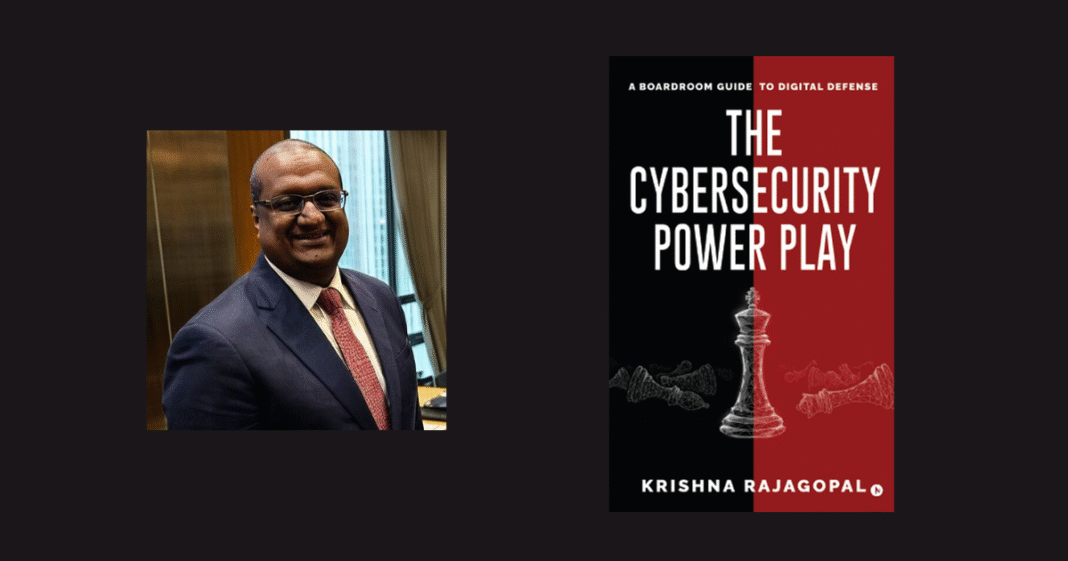What’s the story behind the story? What inspired you to write The Cybersecurity Power Play: A Boardroom Guide to Digital Defense?
I’ve spent years watching brilliant executives make multimillion-dollar decisions with confidence, only to freeze when cybersecurity comes up in the boardroom. They would defer to their IT teams or treat security as a necessary evil rather than understanding it as a business imperative. The breaking point came during a board meeting where I watched a CEO dismiss a cybersecurity investment proposal just weeks before their competitor suffered a devastating breach that cost them $50 million and years of customer trust. I realized there was a fundamental disconnect: cybersecurity professionals speak in technical jargon, while business leaders think in terms of risk, opportunity, and competitive advantage. This book bridges that gap. It’s not about teaching executives to become security experts—it’s about empowering them to make informed strategic decisions that can transform cybersecurity from a cost center into a business differentiator.
If you had to pick theme songs for the main characters of The Cybersecurity Power Play: A Boardroom Guide to Digital Defense, what would they be?
While my book doesn’t have traditional characters, it does have distinct “personas” that emerge throughout:
– The Reactive Executive: “Under Pressure” by Queen & David Bowie—always scrambling after the breach happens.
– The Proactive Leader: “Eye of the Tiger” by Survivor—sees cybersecurity as a competitive advantage and stays ahead of threats.
– The Chief Information Security Officer (CISO): “The Sound of Silence” by Simon & Garfunkel—often speaking wisdom that goes unheard in the boardroom.
What’s your favorite genre to read? Is it the same as your favorite genre to write?
I’m drawn to books that blend strategic thinking with real-world application—think Malcolm Gladwell meets Harvard Business Review. I devour business biographies, especially those that reveal how leaders navigated crises, and I’m fascinated by books on behavioral economics and decision-making under uncertainty. Writing-wise, I gravitate toward what I call “executive education”—taking complex, critical topics and making them accessible to decision-makers who need to act on the information immediately. It’s part business strategy, part risk management, with a heavy dose of practical wisdom.
What books are on your TBR pile right now?
“The Psychology of Money” by Morgan Housel (I’m curious about how financial decision-making parallels cybersecurity investment choices), “Atomic Habits” by James Clear (building security-conscious organizational cultures requires understanding behavior change), and “The Infinite Game” by Simon Sinek (cybersecurity is definitely an infinite game—there’s no final victory, just continuous adaptation).
What scene in your book was your favorite to write?
I had an absolute blast writing the chapter on CISO personas, where I map different Chief Information Security Officer personality types to MBTI and DISC profiling frameworks. After working with hundreds of CISOs across different industries and cultures, I realized they fall into distinct archetypal patterns, and understanding these patterns is crucial for board members who need to evaluate and work effectively with their security leaders.
Do you have any quirky writing habits? (lucky mugs, cats on laps, etc.)
I write like I investigate—I start with the evidence and work backward to the story. My office looks like a detective’s war room, with attack timelines, threat actor profiles, and breach case studies covering every wall. When I’m stuck on explaining a concept, I’ll often pull out actual forensic evidence from past investigations (properly anonymized, of course) and use that as my starting point. My most productive writing actually happens on planes when I’m traveling for work—there’s something about being trapped at 30,000 feet with no Wi-Fi that forces me to focus. My wife jokes that I should thank the airlines for their terrible internet service in my book acknowledgments.
At home, I have a rather crowded “editorial team”—two dogs and four cats who seem to have strong opinions about my work. The cats, in particular, have mastered the art of strategic keyboard walking just when I’m on a roll. My dogs seem to sense when I’m working through a complex cybersecurity framework and choose that exact moment to demand attention. I’m convinced my pets are either secret agents trying to sabotage my productivity or they’re just really committed to keeping me grounded when I get too deep into the technical weeds. My wife has become an expert at translating my cybersecurity rants into plain English—she’s probably responsible for making half the book actually readable by normal humans!
Do you have a motto, quote, or philosophy you live by?
“In cybersecurity, as in business, the cost of prevention is always less than the cost of reaction.” I also believe deeply that complexity is the enemy of security. The best cybersecurity strategies—like the best business strategies—are elegant in their simplicity and ruthless in their focus.
If you could choose one thing for readers to remember after reading your book, what would it be?
Cybersecurity is not an IT problem—it’s a business opportunity. Every organization that gets this right gains a competitive advantage over those that don’t. In today’s digital economy, the companies that will thrive are those whose leaders understand that robust cybersecurity enables business agility, builds customer trust, and creates sustainable competitive moats. Stop thinking of cybersecurity as something that slows you down, and start seeing it as something that lets you move faster than your competitors with confidence.
Sign up for our email and we’ll send you the best new books in your favorite genres weekly.

